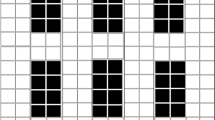Abstract
Autonomous mobile robots are being used to automate many tasks such as cleaning, delivering items, and surveillance. Such tasks often require uninterrupted and continuous service. However, robots have limited battery power and must be recharged frequently. Since manually charging each robot is not always feasible, automatic charging (docking) stations have been developed to automate the process of charging. In a multi-robot system, the tasks are generally distributed between the robots, and different robots have different amounts of remaining battery power. Since the charging stations are expensive, a limited number of charging points are generally available. Hence, an intelligent planner to manage a limited number of charging points for a large number of robots is essential. In this work, we propose a multi-robot path planner for intelligently accessing a limited number of charging points distributed on the map. Unlike traditional path planners, which mainly consider the shortest path criterion to generate paths, the proposed planner also considers the remaining battery power of the robots, task priority, and robot’s location in the map. It allocates the most appropriate charging station to the robots, which require recharging. Simulation results show that the proposed planner can reduce trajectory re-planning, and plan efficient paths to the available charging points.







Similar content being viewed by others
Explore related subjects
Discover the latest articles, news and stories from top researchers in related subjects.References
Hart P, Nilsson N, Raphael B (1968) A formal basis for the heuristic determination of minimum cost paths. IEEE Trans Syst Sci Cybern 4(2):100–107. https://doi.org/10.1109/TSSC.1968.300136
Kavraki L, Svestka P, Latombe JC, Overmars M (1996) Probabilistic roadmaps for path planning in high-dimensional configuration spaces. IEEE Trans Robot Autom 12(4):566–580. https://doi.org/10.1109/70.508439
Kim M, Kim HW, Chong NY (2007) Automated robot docking using direction sensing rfid. In: 2007 IEEE international conference on robotics and automation, pp 4588–4593. https://doi.org/10.1109/ROBOT.2007.364186
Li Z (2017) Wireless charging system based on substation inspection robot. In: 2017 9th international conference on modelling, identification and control (ICMIC), pp 919–923. https://doi.org/10.1109/ICMIC.2017.8321587
Luo R, Su K (2003) A multiagent multisensor based real-time sensory control system for intelligent security robot. In: IEEE international conference on robotics and automation, 2003. Proceedings. ICRA ’03, vol 2, pp 2394–2399. https://doi.org/10.1109/ROBOT.2003.1241951
Masehian E, Mohamadnejad N (2015) Path planning of nonholonomic flying robots using a new virtual obstacle method. In: 2015 3rd RSI international conference on robotics and mechatronics (ICROM), pp 612–617
Quigley M, Conley K, Gerkey BP, Faust J, Foote T, Leibs J, Wheeler R, Ng AY (2009) Ros: an open-source robot operating system. In: ICRA workshop on open source software
Ravankar A, Ravankar AA, Kobayashi Y, Jixin L, Emaru T, Hoshino Y (2015) An intelligent docking station manager for multiple mobile service robots. In: 2015 15th international conference on control, automation and systems (ICCAS), pp 72–78. https://doi.org/10.1109/ICCAS.2015.7364881
Ravankar A, Ravankar AA, Hoshino Y, Emaru T, Kobayashi Y (2016a) On a hopping-points svd and hough transform based line detection algorithm for robot localization and mapping. Int J Adv Robot Syst 13(3):98. https://doi.org/10.5772/63540
Ravankar A, Ravankar AA, Kobayashi Y, Emaru T (2016b) Avoiding blind leading the blind. Int J Adv Robot Syst 13(6):1729881416666,088. https://doi.org/10.1177/1729881416666088
Ravankar A, Ravankar A, Kobayashi Y, Hoshino Y, Peng CC (2018a) Path smoothing techniques in robot navigation: state-of-the-art, current and future challenges. Sensors 18(9):3170. https://doi.org/10.3390/s18093170
Ravankar A, Ravankar A, Kobayashi Y, Hoshino Y, Peng CC, Watanabe M (2018b) Hitchhiking based symbiotic multi-robot navigation in sensor networks. Robotics 7(3):37. https://doi.org/10.3390/robotics7030037
Ravankar A, Ravankar A, Hoshino Y, Kobayashi Y (2019) Virtual obstacles for safe mobile robot navigation. In: 2019 8th international congress on advanced applied informatics (IIAI-AAI), pp 552–555
Ravankar A, Ravankar A, Rawankar A, Hoshino Y, Kobayashi Y (2019a) Itc: infused tangential curves for smooth 2d and 3d navigation of mobile robots. Sensors 19(20):4384. https://doi.org/10.3390/s19204384
Ravankar A, Ravankar AA, Hoshino Y, Kobayashi Y (2019b) On sharing spatial data with uncertainty integration amongst multiple robots having different maps. Appl Sci 9(13):2753. https://doi.org/10.3390/app9132753
Ravankar AA, Ravankar A, Emaru T, Kobayashi Y (2020) Line segment extraction and polyline mapping for mobile robots in indoor structured environments using range sensors. SICE J Control Meas Syst Integr 13(3):138–147. https://doi.org/10.9746/jcmsi.13.138
Silverman MC, Nies D, Jung B, Sukhatme GS (2002) Staying alive: a docking station for autonomous robot recharging. In: ICRA, IEEE, pp 1050–1055
Song G, Wang H, Zhang J, Meng T (2011) Automatic docking system for recharging home surveillance robots. IEEE Trans Consum Electron 57(2):428–435. https://doi.org/10.1109/TCE.2011.5955176
Stentz A, Mellon IC (1993) Optimal and efficient path planning for unknown and dynamic environments. Int J Robot Autom 10:89–100
Vaz P, Ferreira R, Grossmann V, Ribeiro M (1997) Docking of a mobile platform based on infrared sensors. In: Proceedings of the IEEE international symposium on industrial electronics, 1997. ISIE ’97, vol 2, pp 735–740. https://doi.org/10.1109/ISIE.1997.649089
Wu YC, Teng MC, Tsai YJ (2009) Robot docking station for automatic battery exchanging and charging. In: IEEE international conference on robotics and biomimetics, 2008. ROBIO 2008, pp 1043–1046. https://doi.org/10.1109/ROBIO.2009.4913144
Yuan Q, Liu J (2017) Application of improved k-medoids algorithm in charging station planning for mobile robot. In: 2017 7th IEEE international conference on electronics information and emergency communication (ICEIEC), pp 322–325. https://doi.org/10.1109/ICEIEC.2017.8076573
Author information
Authors and Affiliations
Corresponding authors
Additional information
Publisher's Note
Springer Nature remains neutral with regard to jurisdictional claims in published maps and institutional affiliations.
This work was presented in part at the 25th International Symposium on Artificial Life and Robotics (Beppu, Oita, January 22–24, 2020).
About this article
Cite this article
Ravankar, A., Ravankar, A.A., Watanabe, M. et al. Multi-robot path planning for smart access of distributed charging points in map. Artif Life Robotics 26, 52–60 (2021). https://doi.org/10.1007/s10015-020-00612-8
Received:
Accepted:
Published:
Issue Date:
DOI: https://doi.org/10.1007/s10015-020-00612-8




